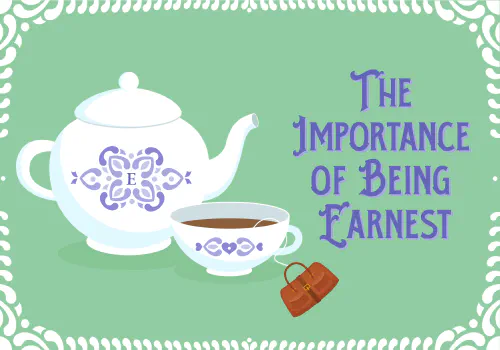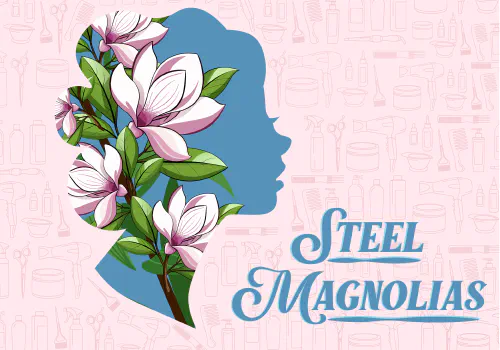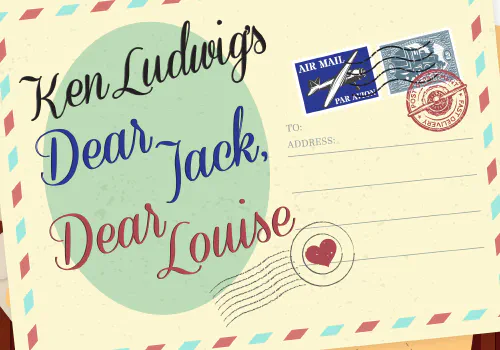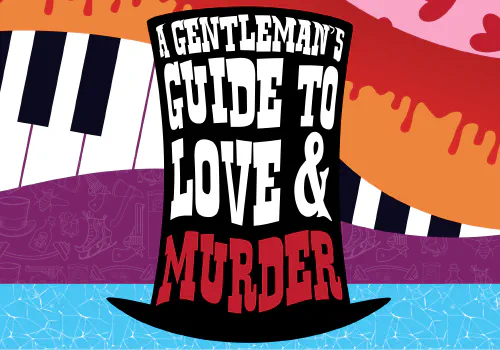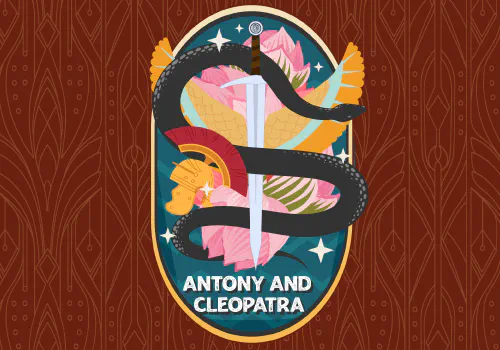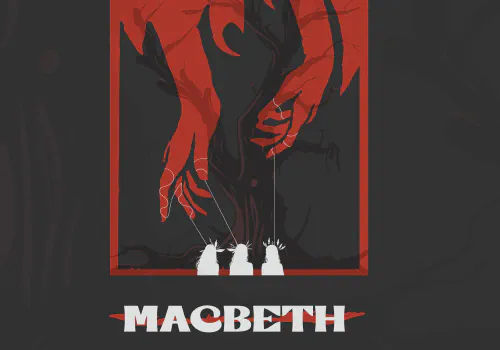Twins: The Time-Honored Trope
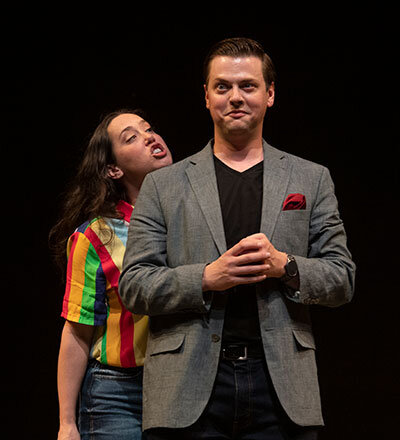
Alex Keiper (left) as Jo Smith and Michael Doherty as Vyvian Jones in The Comedy of Terrors. (Photo by Karl Hugh.)
By Don Leavitt
I have had a lifelong fascination with twins. As a very young child, I, like many others, had an imaginary friend, but mine took the form of an identical twin who was like me in every way. We enjoyed the same things, finished each other’s sentences, and looked exactly the same. I was known as Donny, and my “twin” was known as Johnny. I was the clean one, Johnny was the messy one. For two years, my mother tolerated my insistence that, “It wasn’t me, Mom, it was Johnny.” It was perfectly reasonable for Mom to be confused; after all, we did look exactly alike. Today, my parents laugh about finding me in the bathroom, staring into the mirror and carrying on conversations with my reflected image, but at the time, the sheer depth of my commitment to this fantasy must have caused them more than a little concern.
Eventually, some time around first grade, I grew out of my imaginary twin, but my fascination with twins continued. I would look at classmates who were twins, or twins I saw in movies and on television, with a certain degree of jealousy. I loved their stories of being mistaken for the other, of playing pranks on people by changing places. I absolutely loved the movie, The Parent Trap (the original with Hayley Mills, thank you very much), and was fascinated by the twins’ plan to switch places so that each could spend time with the other’s custodial parent. Wouldn’t it be awesome to be able to be someone else and get away with it because you looked identical? To thoroughly and completely put one over on everyone else?
It is from this tradition that The Comedy of Terrors draws its comedy. The play, a farce by British playwright John Goodrum, relies on two actors to portray two different sets of identical twins, plus a younger brother who, as implausibly as farce allows, is also a dead ringer for his older, twin siblings. The plot of the play is nonsensical and almost irrelevant. It is the fun of watching two actors whiplash themselves through the various scenes, trading identities too quickly for even a plausible costume change, and the resulting confusion caused by the mistaken identities, that audiences will enjoy most of all.
The trope of using twins and mistaken identities as comedic devices is nearly as old as acting itself. As early as the Third Century BC, the Roman playwright Plautus was utilizing the mistaken identity in his work, much of which was adaptations of earlier Greek texts. Shakespeare famously used the device in The Comedy of Errors(which Goodrum makes pun of in the title of his play) and Twelfth Night. Both comedies involve twins, both identical and fraternal, and the consequences that stem from both the accidental and deliberate confusing of their identities. From Mark Twain to Stephen King, modern examples abound and extend beyond comedy and farce to drama, romance, and horror.
Shakespeare’s use of twins is particularly intriguing. Of the relationship between Shakespeare and Plautus, The Internet Shakespeare Editions notes: “One of Shakespeare’s earliest comedies is based closely upon two Latin originals. The Comedy of Errorstakes the plots of two plays by Plautus: the *Menaechmi,*a play about long separated twins who are mistaken for each other and are eventually reunited; and the *Amphitruo,*where masters and servants become confused. Shakespeare combined the two plots and added twin servants to the twin masters to complicate things further” (https://internetshakespeare.uvic.ca/ Library/ SLT/ drama/ classical%20drama/ plautus.html).
Goodrum’s The Comedy of Terrors bears no resemblance to Plautus, Shakespeare, or The Comedy of Errors, except for the deliberate play on words in its title. But it does build on the trope by relying solely on the concept of twins and mistaken identities to the point that it is the story. Goodrum, whose previous plays have been mostly noir or macabre adaptations of stories by Dickens, Conan Doyle, and Poe, toys gleefully with these concepts, adding just a dash of the macabre to which he is more accustomed for humorous effect.
There is almost no point in dwelling on the plot. The conceit of this play—that two actors play all the roles—is a vehicle for actors to have fun and flex their performing muscles; the audience is really just taken along for the ride. It is madcap and breathtaking and a lot of fun, but the saving grace is that it never takes itself too seriously. Goodrum cleverly, and quite wisely, allows the actors and the play to wink at themselves from time to time. Midway through Act Two, one character is suddenly introduced to the third identical sibling of another character and can barely conceal her disbelief. “Oh, my God! You’re not another one, are you?” she asks, to which the new character responds (in a funny homage to the trope itself), “If—by some strange and unnatural coincidence much favoured by comic playwrights from the Third Century BC Greeks onward—but I digress—if—by some chance—you’ve ’appened to meet both of my two identical elder brothers—then, ‘Yes! I’m another one!’”
Of course, the play relies heavily on frantic entrances and exits to make the mechanics of two actors playing all the roles work, and Goodrum has obviously had fun inventing reasons to get one character offstage so another character can come on. Even these machinations get a gentle tease: later in the scene mentioned above, the first character asks, “Do the three of you often get together in the same place?” And the other wryly replies, “Not if we can ’elp it, no.”
I was never able to conjure an identical twin, and I never had the identical twin offspring I was just sure I’d get to be a dad to. I didn’t fall in love with a twin and, to my knowledge, have never dated a twin. The jealousy I felt watching other twins growing up has mostly dissipated. But every once in a while, I read or watch something about twins that captures my attention. I devoured The Comedy of Terrors with rapt amusement, and when I was finished, I couldn’t help but think, “Damn, that sounds like fun!”


